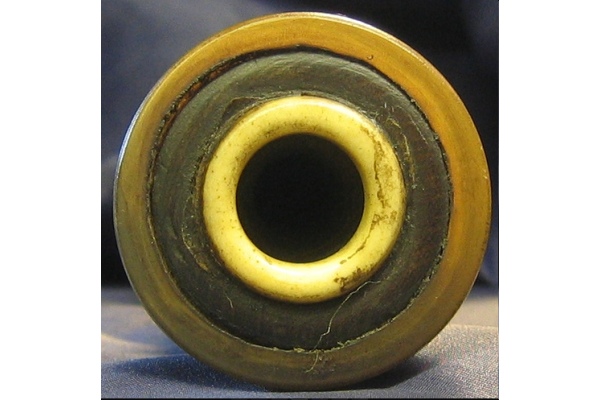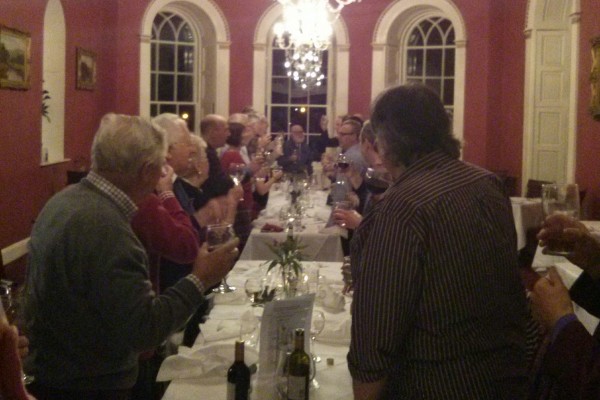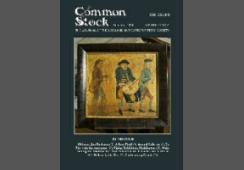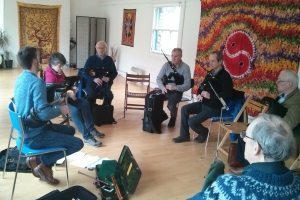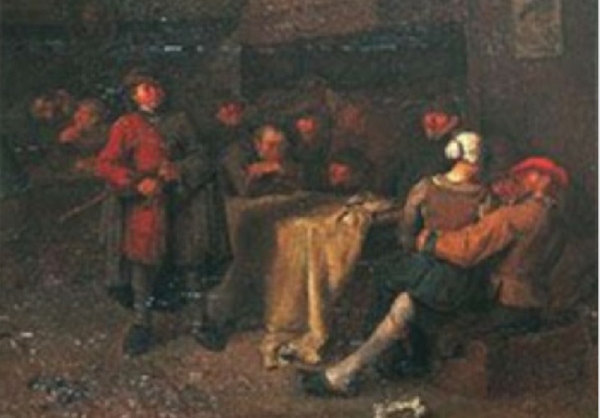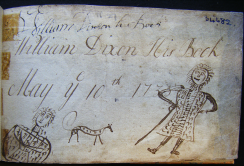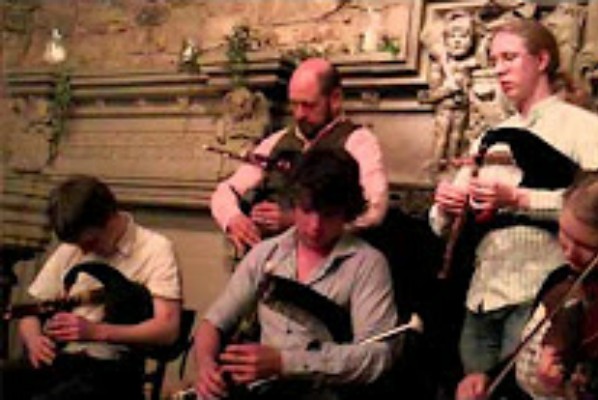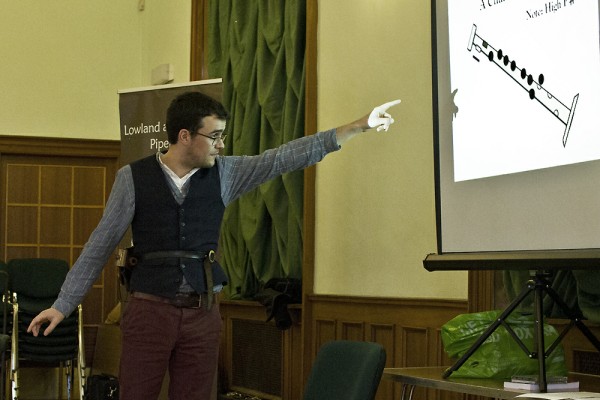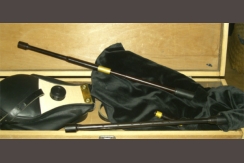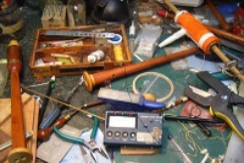It is fascinating how much can be gleaned by unpicking the text of a primary source such as an advertisement. At first glance, this piece from The Caledonian Mercury dated February 21st, 1807, does nothing much more than confirm Glasgow as a major centre for importing wood in the late 18th and 19th centuries. A couple of hours with a computer, a few relevant books and some slightly random questions and conversations however, led us to ideas and trains of thought that brought us from before 1807 right up to COP 26.

Here in Clyde Street, right in the centre of Glasgow, was The Liverpool Mahogany and Stave Yard, clearly specialising in selling imported woods. And they are proudly announcing on Wednesday the 4th of March 1807, at 12 o'clock noon, an auction of Spanish and Honduras mahogany and that ‘for sizes and quality no such parcel ever appeared in this market’.
To put this into some historical context, the US Act prohibiting the import of slaves had been passed just two days earlier, on March 2nd 1807. Had mahogany, alongside cotton and sugar, been part of the three sides of the ‘slave trade triangle’ before this date?
Apparently Honduras mahogany, referred to as Bay or Baywood, was relatively cheap and plentiful. Spanish or Hispanola mahogany seems to have been the wood of choice for high quality work. Both were highly prized by cabinet makers as well as having a significant role in ship building and furnishing, and imports had risen steadily over the course of the 18th century until they became over-harvested. (1) By 1807 shortages were being experienced, together with escalating prices, so that alternative sources and species were being sought. The sale on 4th March in Glasgow might have attracted a lot of attention, particularly if it was as rare an occurrence as is claimed.
The woods that were ‘Also on sale, at the above Yard’ would most probably have been those woods that were regularly kept in stock. ‘White Oak Hogshead Staves and Headings’ would have been used by coopers for making wooden barrels for the beer and whisky trade, and possibly the pencil cedar was used for making pencils. The variety of tropical hardwoods that were stocked, including woods from China and Brazil, is surprising. They could have been used for furniture making and decorative work. Some of these woods though are suitable for musical instrument making, including pipemaking. However it is not possible to be sure whether the names for the other tropical hardwoods that this company was selling in the advertisement are the same names that they are known by today.
Returning to the context of the year 1807, another story opens up through Jeannie Campbell’s research. In her book Highland Bagpipe Makers, she traced only five pipemakers in Scotland who would have been operating in 1807(2). We do not know how many pipes per annum they made, but probably not large quantities. (As Jeannie points out, few pipe makers had only one job; they often doubled as wood and ivory turners). However, by 1860, Jeannie is able to list over 30 pipemakers who were or had been operating in Scotland. In the intervening decades, the British Army had begun to adopt the Great Highland Bagpipe and to form pipe bands which increased the demand for pipes.
Of this period, Hugh Cheape writes
“The production of the Great Highland bagpipe was virtually market driven and the persistence of war-time and siege economies and buoyant prices helped to keep Robertson and Macdonald in business ….”(3)
and
“…the Highland bagpipe survived by virtue of the growth of empire and standing armies….and these influences also standardised the instrument and styles of playing. Military performance demanded uniformity, discipline and unison, and the Highland piper as a soloist and in pipe bands followed the British Army round the world from the late 18th century.(4)
There was clearly an escalation in demand from the British Army for bagpipes and it had to be met at whatever cost. It drove the need to overharvest Cocus wood and Ebony from the West Indies until the supplies were exhausted and then to change to using African Blackwood. No thought was given to the source or sustainability of these woods. Pipes were also adorned with elephant ivory, so elephants had to be slaughtered. At that time Britain and other colonial powers operated as though they owned the world and had an inalienable right to whatever they demanded.
Society's attitude changes: what is considered normal in one era can be deemed unacceptable by the next generation. Slavery; women’s suffrage; the ivory trade – the list is a very long one.
During the 20th Century there was a slowly growing awareness of the need for ‘conservation’. CITES (Convention on International Trade in Endangered Species of Wild Fauna and Flora) was adopted in 1975 to protect species in the wild from threat from trade. It sprang from the IUPN (International Union for the Protection of Nature) which was established in 1948 from a UNESCO initiative. IUPN drafted the first list of gravely endangered species.
Both the speed of take-up of a particular issue and its rate of change in importance vary enormously in different parts of the world, even in neighbouring states or countries, and legal agreements are only binding to a degree. In 1989 CITES banned the international ivory trade in its member states but did not prevent trade within the borders of a country so unregulated domestic markets continued to allow poaching, just as slavery had continued in the USA well after 1807.
To return to the advertisement… a cursory search on the Internet shows that some of the woods mentioned in 1807 are now listed by CITES so that anyone today who tried to import and sell some of these woods would be liable to prosecution and major fines. Back in 1807 though, Britain had no thought of the long-term effects of this. It operated with an arrogant sense of entitlement to all the wealth of its empire, asset stripping it of plants, mineral wealth, crops, people, trees - just as any other nation in a position to do so has done. We are all living in its legacy, where some types of tropical woods have been ruthlessly over-harvested and are now endangered.
We are living now in the midst of a huge change of attitude as the reality of climate change hits us. The driving force of so many, especially young, people seems to be having an influence at last and COP26 offered us some hope that big businesses and governments have woken up to the issues and that we may, possibly, be able to do whatever is needed to save many species from extinction, including our own.
For previous centuries European bagpipe makers and other woodwind instrument makers have used local woods to make their instruments. But now as every one of us faces the current global situation it is essential that we question all the choices that we make, in every aspect of our lives, including our choices of food, clothing, transport, lifestyle. Now is the time to consider and question the issue of using scarce tropical hardwoods for pipemaking.
By Julian Goodacre, Pat Goodacre with thanks to Pete Rigg, nyckelharpa -maker for the 1807 advertisement.
Notes
1 Anderson, Jennifer L., Mahogany, Harvard UP, 2012
2. Campbell, Jeannie, Highland Bagpipe Makers. 2nd edition. 2011, p. 1
3. Cheape, Hugh, Bagpipes ‘A National Collection of a National Instrument’, National Museums Scotland, 2008, p. 136
4 ‘Cheape, Hugh, The Book of the Bagpipe’, The Appletree Press Ltd. 1999, p. 70
From the Archive: August 1987
Jim Gilchrist reports on a talk by David Moore;
INCREASING worldwide scarcity of hardwoods has serious implications for makers of bagpipes and other instruments, members of the Lowland and Border Pipers' Society were told at a meeting in Edinburgh earlier this year. As hardwoods become more and more difficult to come by, cauld-wind pipe-makers, at least, may well turn increasingly to the more traditional fruit woods for their instruments. This was the warning given by David Moore, a retired forestry expert now making cauld-wind pipes in association with his son, Hamish Moore. During his talk, in the School of Scottish Studies, on various woods and their properties regarding pipes, Mr. Moore ranged over the hard woods, passing round samples ranging from holly, sawn only two days previously, to a 30-year-old section of purple heart from Trinidad, and discussed their diverse properties which pertained to pipe-making, such as density, texture and water content.
Having dealt with these, he said that one of the biggest considerations for the future of pipe-making--both Highland and Lowland--was the problem of supply. Two years ago, in his then capacity as a forestry advisor with the UN, he had visited Tanzania and Malawi. There, the pressing concern was maintaining the supply of native timber for firewood, to supply the growing urban populations. `When that question arises, the implications for pipe-makers aren't good.` In Tanzania, for instance, women living in the cities would spend 9 hours collecting wood and bringing it home as fuel—"and this is an area where we get blackwood from".
"But there's very little Tanzanian blackwood coming in now, I know one pipe-maker using stuff from Mozambique, while other makers are using Canadian maple impregnated with resin to increase its density."
There were, he continued, some woods which had vanished from the market altogether-—-such as partridge wood or cocus.
Alternative woods would have to be considered, and from the point of view of the maker of cauld-wind pipes, we should be looking at the woods which were traditionally used for these pipes... laburnum, holly, hornbeam, blackthorn and all the fruit woods. "They all give very pleasant tone indeed, although they're maybe not quite so loud.”
In the December 2007 issue of Common Stock another paper was printed written by David Moore titled Bagpipe timbers, past present and future. Here we include an excerpt with more details about blackwood.
“Early this century [20th], as cocus wood became more scarce (and remember that there was great competition for supplies from such manufacturers as Boosey & Hawkes for other woodwind instruments), ample supplies of ebony met the demands. Concurrently, and particularly after the First World War ended and the UK took over German East Africa (Tanzania), the region was opened up to increased commerce. Blackwood came on to the market in steadily increasing quantities and, because of its superior characteristics, has in time displaced ebony. I would imagine that from about 1945 all reputable pipe makers have used blackwood exclusively.
It is worth discussing this species in more detail. The distribution runs from the old Anglo-Egyptian Sudan, through Uganda and Kenya to Tanzania, Malawi, Mozambique and the two Rhodesias. It grows sparsely throughout the savanna type of forests called miombo forests which occur at elevations of less than 5,000ft in rainfall zones of 35in to 45in per year and with dry seasons of seven to eight months.
Soils are generally poor and the total of all tree crowns in the forest covers less than 50 per cent of the ground. Botanically, the blackwood belongs to that wonderful genus Dalbergia, which with over 120 species includes such important “musical” timbers as kingwood, Brazilian tulipwood and rosewood, cocobolo, Honduras rosewood and Indian rosewood. The tree is often a scruffy, multi-stemmed runt of 15 to 25ft, but occasionally as high as 50ft.
The species has been heavily exploited commercially but, to put this into perspective, I understand that bagpipe manufacture accounts for about 2 per cent of the volume exported. Much of the miombo forest is being destroyed by shifting cultivation and by excessive burning to stimulate new wet season grasslands for grazing. Regeneration is therefore at a standstill and, since it can take up to 80 years for a sapling to reach commercial size, the outlook for long-term supply is poor indeed. Actual quantities reaching the United Kingdom have improved in past years but this is because Tanzania is no longer restricted to one government agency. Private companies are now exporting, but this means that the existing crop will be cut out all the sooner.”
The African Blackwood Conservation Project
While preparing Julian’s article for publication we were sent information about the African Blackwood Conservation Project. The following is from the project website at http://www.blackwoodconservation.org/
“Since its creation [in 1996], the ABCP has been dedicated to ongoing replanting programs for the species in northern Tanzania, an area in which it once thrived, but is now commercially extinct. In order to raise awareness about the international importance of the tree it has instituted educational programs and enlisted the assistance of other concerned conservationists, who have assisted in replanting efforts for the species. Through the cooperative efforts of schools, churches, municipal organizations and private landowners, the ABCP has distributed several hundred thousand mpingo seedlings from its tree nursery in Mijongweni, to the south of Mt. Kilimanjaro. In addition to African blackwood its nursery also supplies indigenous tree seedlings for domestic use to improve the standard of living in communities where we work and for environmental remediation in the Mt. Kilimanjaro watershed.”
For a real eye-opener, try ‘The Tree of Music’ video here: https://www.youtube.com/watch?v=wUcW1dRH2XQ&t=13s
